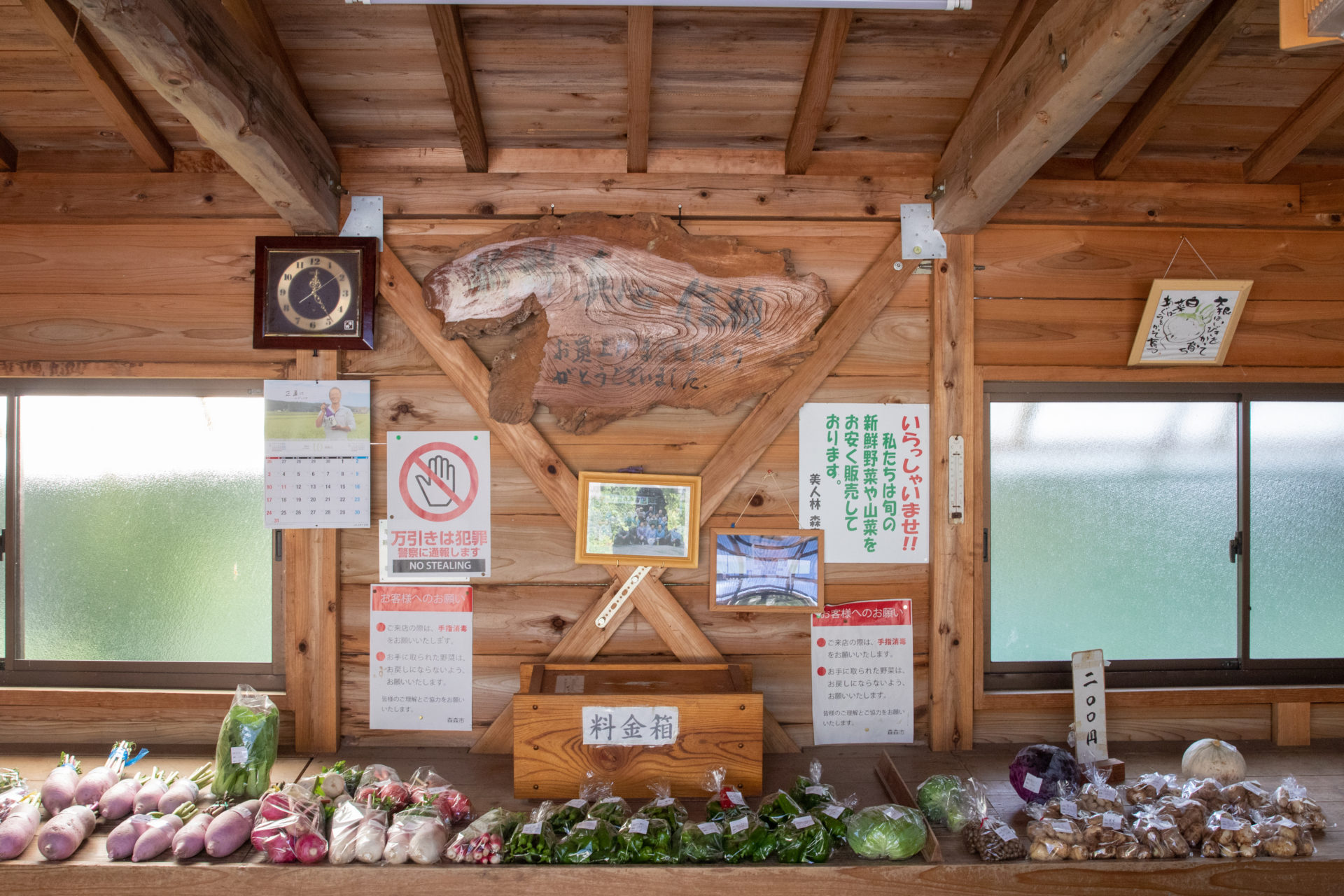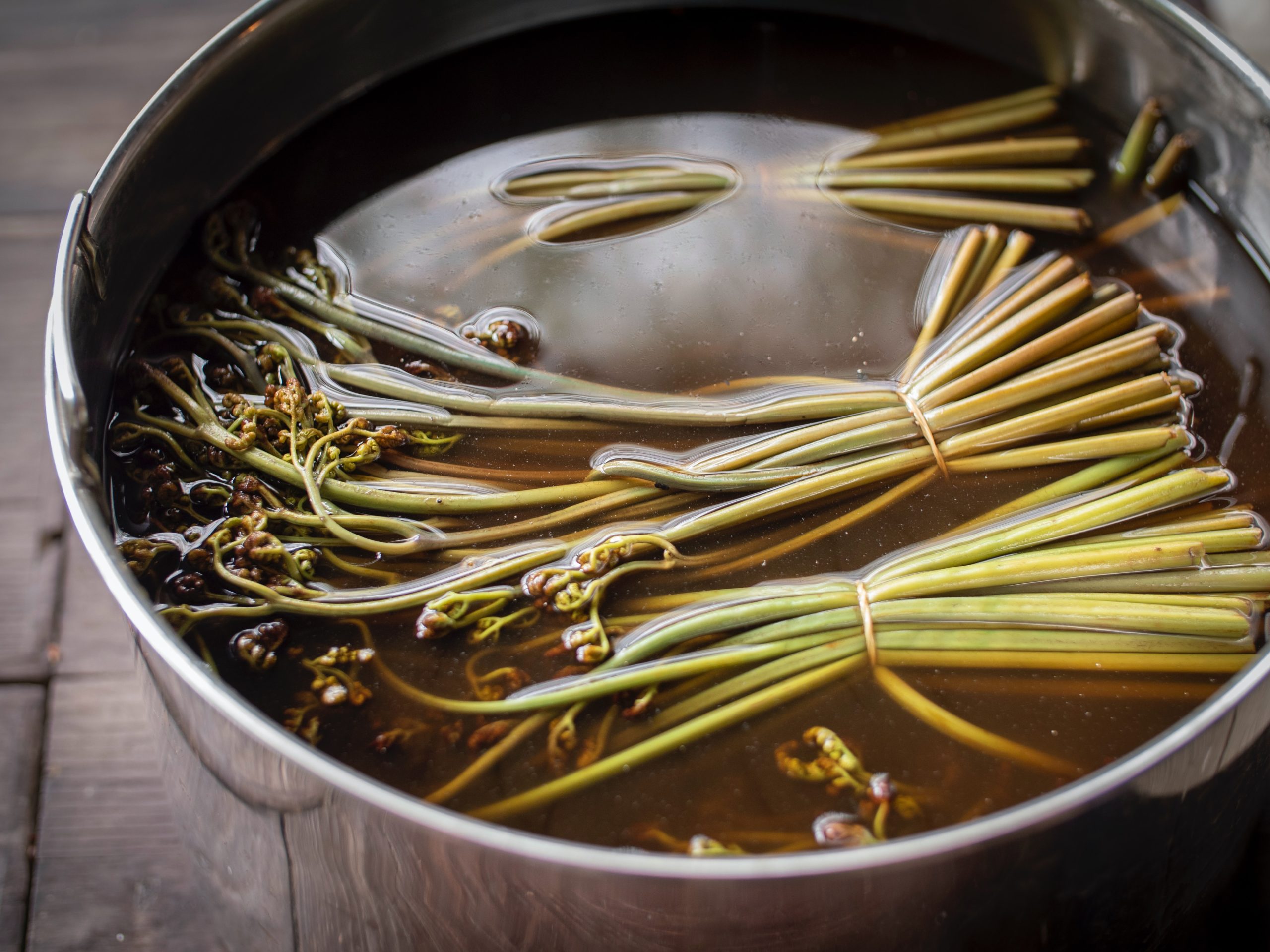In Japan, we can enjoy seasonal foods along the four seasons. Here we will look at the benefits of eating seasonal foods and also introduce when they are in season.
What are seasonal foods?
Seasonal food refers to the time of year when certain foods are relatively fresher and tastier than at other times of the year. Sometimes it simply refers to seasonal foods at the time it can be harvested, but sometimes it refers to the time when seasonal foods are at their best. So there are some foods that are in season after they have been stored for a while rather than when they are harvested.
The benefits of eating foods that are in season
What are the benefits of eating foods that are in season?
The best tasting and most nutritious foods
According to an article published in the Asahi Shimbun and other media on March 15, 2010, tomatoes harvested in July contain 18 mg of vitamin C per 100 grams, compared to 9 mg per 100 grams for tomatoes grown in greenhouses in January which is out of season. In the case of spinach, it contained 73 mg in February compared to 9 mg in July which is also out of season(1)
Inexpensive
The price of vegetables grown in facilities is several percent to twice as high as that of vegetables grown outdoors in season. (1) As technology for transportation has evolved, transportation costs have become lower and lower, and overseas produce can be sold at lower prices, but seasonal foods are easily available at lower prices.
Saving energy used in transportation and growing environment
Crops grown and harvested in their original season do not require additional energy input to change the growing environment by regulating temperature, etc., as in the case of cultivation using glasshouses. (1) Compared to vegetables grown outdoor during the season, vegetables grown in greenhouses during the off-season requires several to nearly ten times as much additional energy. (1)
Enriching the local economy and community
Money circulates in the community by buying food produced by local farmers. You will be able to hear about the condition of the crops and how they were grown, so you will be able to enjoy your meal with more affection.
Feeling seasons
By actively incorporating seasonal foods, we can feel the seasons in our daily lives. As the social infrastructure and technology for transportation and growing vegetables have improved, supermarkets now offer a wide variety of vegetables regardless of their season.
In other words, it can be said that the sense of season has disappeared.
Seasonal foods Lists in Japan
Here is a list of vegetables and fruits that are eaten in Japan at different times of the year.
Spring
Leaf and stem vegetables
| Jan | Feb | Mar | Apr | May | Jun | Jul | Aug | Sep | Oct | Nov | Dec | |
|---|---|---|---|---|---|---|---|---|---|---|---|---|
| Cabbage | 1 | 2 | 3 | 4 | 5 | 6 | 12 | |||||
| Asparagus | 4 | 5 | 6 | |||||||||
| mustard greens | 2 | 3 | ||||||||||
| Cauliflower | 1 | 2 | 3 | 11 | 12 | |||||||
| Mizuna (Potherb mustard) | 1 | 2 | 3 | 12 | ||||||||
| Watercress | 3 | 4 | 5 | 6 | ||||||||
| Crown Daisy | 1 | 2 | 3 | 11 | 12 | |||||||
| Seri / Japanese Parsley | 1 | 2 | 3 | 4 | 12 | |||||||
| Celery | 1 | 2 | 3 | 4 | 12 | |||||||
| Bamboo shoots | 4 | 5 | 6 | |||||||||
| field mustard | 1 | 2 | 3 | |||||||||
| Chinese chive | 3 | 4 | 5 | |||||||||
| garlic | 5 | 6 | 7 | 8 | ||||||||
| Parsley | 3 | 4 | ||||||||||
| Mitsuba (edible clover) | 3 | 4 | ||||||||||
| Arugula | 4 | 5 | 6 | 10 | 11 | 12 | ||||||
| lettuce | 4 | 5 | 6 | 7 | 8 | 10 | 11 | 12 | ||||
| Wakegi Green Onion | 3 | 4 | 11 | 12 | ||||||||
| broccoli | 1 | 2 | 3 | |||||||||
| Angelica keiskei | 3 | 4 | 5 | 6 | 7 | 8 | 9 |
Root vegetables
| Jan | Feb | Mar | Apr | May | Jun | Jul | Aug | Sep | Oct | Nov | Dec | |
|---|---|---|---|---|---|---|---|---|---|---|---|---|
| Burdock | 1 | 2 | 4 | 5 | 11 | 12 | ||||||
| Potatoes | 1 | 2 | 4 | 5 | 11 | 12 | ||||||
| Chinese yam | 1 | 4 | 5 | 11 | 12 | |||||||
| Turnips | 3 | 4 | 5 | 10 | 11 | |||||||
| Onions | 3 | 4 |
Mountain Vegitables
| Jan | Feb | Mar | Apr | May | Jun | Jul | Aug | Sep | Oct | Nov | Dec | |
|---|---|---|---|---|---|---|---|---|---|---|---|---|
| Japanese butterbur scape | 2 | 3|||||||||||
| Udo | 3 | 4 | 5 | |||||||||
| Kogomi (fiddlehead orstrich fern) | 4 | 5 | ||||||||||
| Tara-no-me (Aralia Sprout) | <4 | 5 | ||||||||||
| Japanese butterbur | 4 | 5 | ||||||||||
| Bracken | 2 | 3 | 4 | |||||||||
| Royal fern | 4 | 5 | 6 |
Wild vegetables are well known as a spring specialty in Japan.
-

-
Sansai In Japan : How People Enjoy Spring In Snow Country
In Japan's heavy snowfall areas, people live surrounded by snow for almost half a year. In spring, Sansai (Wild vegetable) appear from the mountains when the snow melts. Japanese people feel and enjoy the arrival of the spring season by eating Sansai. There are many kinds of wild vegetables that have been familiar to the Japanese people since ancient times. What is Sansai? Among edible plants, vegetables grown by humans in fields are called "vegetables (Yasai / 野菜)" while those that grow wild in the natural environment are called "Sansai (山菜)". Vegetables have been improved through repeated breeding, so they ...
続きを見る
Fruits
| Jan | Feb | Mar | Apr | May | Jun | Jul | Aug | Sep | Oct | Nov | Dec | |
|---|---|---|---|---|---|---|---|---|---|---|---|---|
| Sweet watson pomelo | 3 | 4 | 5 | |||||||||
| Strawberry | 4 | 5 | ||||||||||
| Orange | 1 | 2 | 3 | |||||||||
| Grapefruit | 4 | 5 | ||||||||||
| Dekopon | 2 | 3 | 4 | |||||||||
| Natsumikan | 4 | 5 | 6 | |||||||||
| Hassaku | 2 | 3 | ||||||||||
| Melon | 5 | 6 | 7 | 8 |
Beans
| Jan | Feb | Mar | Apr | May | Jun | Jul | Aug | Sep | Oct | Nov | Dec | |
|---|---|---|---|---|---|---|---|---|---|---|---|---|
| Green peas | 4 | 5 | 6 | |||||||||
| Field peas | 4 | 5 | 6 | |||||||||
| Fava bean | 4 | 5 | 6 |
Mashroom
| Jan | Feb | Mar | Apr | May | Jun | Jul | Aug | Sep | Oct | Nov | Dec | |
|---|---|---|---|---|---|---|---|---|---|---|---|---|
| Shiitake mushroom | 3 | 4 | 5 | 9 | 10 | 11 | ||||||
| Wood ear mushroom | 4 | 5 | 6 | 7 | 8 |
Summer
Fruit vegetables
| Jan | Feb | Mar | Apr | May | Jun | Jul | Aug | Sep | Oct | Nov | Dec | |
|---|---|---|---|---|---|---|---|---|---|---|---|---|
| Green chilli | 7 | 8 | 9 | |||||||||
| Ashitaba (Angelica keiskei) | 4 | 5 | 6 | 7 | 8 | 9 | ||||||
| Okura | 6 | 7 | 8 | 9 | ||||||||
| pumpkin | 7 | 8 | 9 | 10 | 11 | 12 | ||||||
| Cucumbers | 6 | 7 | 8 | |||||||||
| Shishito peppers | 4 | 5 | 6 | 7 | 8 | |||||||
| Zucchini | 6 | 7 | 8 | 9 | ||||||||
| Wax gourd | 7 | 8 | 9 | 10 | ||||||||
| Corn | 7 | 8 | ||||||||||
| Tomato | 6 | 7 | 8 | |||||||||
| Eggplant | 7 | 8 | 9 | |||||||||
| Bitter melon | 7 | 8 | 9 | |||||||||
| Paprika | 6 | 7 | 8 | |||||||||
| Bell peppers | 6 | 7 | 8 |
Leaf and stem vegetables
| Jan | Feb | Mar | Apr | May | Jun | Jul | Aug | Sep | Oct | Nov | Dec | |
|---|---|---|---|---|---|---|---|---|---|---|---|---|
| Asparagus | 4 | 5 | 6 | |||||||||
| Cabbage | 1 | 2 | 3 | 4 | 5 | 6 | 12 | |||||
| Watercress | 3 | 4 | 5 | 6 | ||||||||
| Shiso (perilla / Japanese basil) | 6 | 7 | 8 | 9 | ||||||||
| Indian spinach | 6 | 7 | 8 | 9 | 10 | |||||||
| Garlic | 5 | 6 | 7 | 8 | ||||||||
| Myoga (Japanese ginger) | 6 | 7 | 8 | 9 | 10 | |||||||
| Jew’s mallow | 7 | 8 | ||||||||||
| Pickled scallion | 6 | 7 | ||||||||||
| Arugula | 4 | 5 | 6 | 10 | 11 | 12 | ||||||
| Lettuce | 4 | 5 | 6 | 7 | 8 | 11 | 12 |
Root vegetables
| Jan | Feb | Mar | Apr | May | Jun | Jul | Aug | Sep | Oct | Nov | Dec | |
|---|---|---|---|---|---|---|---|---|---|---|---|---|
| Taro | 8 | 9 | 10 | 11 | 12 | |||||||
| Potatoes | 5 | 6 | 10 | 11 | ||||||||
| Pickled ginger | 6 | 7 | 8 |
Mountain Vegitables
| Jan | Feb | Mar | Apr | May | Jun | Jul | Aug | Sep | Oct | Nov | Dec | |
|---|---|---|---|---|---|---|---|---|---|---|---|---|
| Royal Fern | 4 | 5 | 6 |
Fruits
| Jan | Feb | Mar | Apr | May | Jun | Jul | Aug | Sep | Oct | Nov | Dec | |
|---|---|---|---|---|---|---|---|---|---|---|---|---|
| Apricot | 6 | 7 | Fig | 7 | 8 | 9 | 10 | Ume / Umeboshi | 6 | 7 | Kabosu (type of citrus fruit) | 8 | 9 | 10 | Cherries | 6 | 7 | Shekwasha | 1 | 8 | 9 | 12 | Watermelon | 7 | Sudachi (Japanese citrus fruit) | 8 | 9 | 10 | Pear | 8 | 9 | Natsumikan | 4 | 5 | 6 | Pineapple | 6 | 7 | 8 | Loquat | 6 | Grape | 7 | 8 | 9 | Mango | 3 | 4 | 5 | 6 | 7 | 8 | Melons | 5 | 6 | 7 | 8 | Peach | 7 | 8 |
Beans
| Jan | Feb | Mar | Apr | May | Jun | Jul | Aug | Sep | Oct | Nov | Dec | |
|---|---|---|---|---|---|---|---|---|---|---|---|---|
| Green beans | 6 | 7 | 8 | 9 | Edamame (green soybeans) | 6 | 7 | 8 | Green peas | 4 | 5 | 6 | Field peas | 4 | 5 | 6 | Fava bean | 4 | 5 | 6 |
Mashroom
| Jan | Feb | Mar | Apr | May | Jun | Jul | Aug | Sep | Oct | Nov | Dec | |
|---|---|---|---|---|---|---|---|---|---|---|---|---|
| Wood ear mushroom | 4 | 5 | 6 | 7 | 8 |
Fall
Fruits Vegitable
| Jan | Feb | Mar | Apr | May | Jun | Jul | Aug | Sep | Oct | Nov | Dec | |
|---|---|---|---|---|---|---|---|---|---|---|---|---|
| Green pepper | 7 | 8 | 9 | |||||||||
| Okura | 6 | 7 | 8 | 9 | ||||||||
| Pumpkin | 7 | 8 | 9 | 10 | 11 | 12 | ||||||
| Zucchini | 6 | 7 | 8 | 9 | ||||||||
| Wax gourd | 7 | 8 | 9 | 10 | ||||||||
| Eggplant | 7 | 8 | 9 | |||||||||
| Bitter melon | 7 | 8 | 9 |
Leaf and stem vegetables
| Jan | Feb | Mar | Apr | May | Jun | Jul | Aug | Sep | Oct | Nov | Dec | |
|---|---|---|---|---|---|---|---|---|---|---|---|---|
| Ashitaba (Angelica keiskei) | 3 | 4 | 5 | 6 | 7 | 8 | 9 | |||||
| Cauliflower | 1 | 2 | 3 | 11 | 12 | |||||||
| Arrowhead tuber | 1 | 2 | 11 | 12 | ||||||||
| Shiso (perilla / Japanese basil) | 6 | 7 | 8 | 9 | ||||||||
| Crown Daisy | 1 | 2 | 3 | 11 | 12 | |||||||
| Bok choy | 9 | 10 | 11 | 12 | ||||||||
| Indian spinach | 6 | 7 | 8 | 9 | 10 | |||||||
| Green Onion | 1 | 2 | 11 | 12 | ||||||||
| Nozawana (pickled turnip greens) | 1 | 2 | 11 | 12 | ||||||||
| Napa cabbage | 1 | 2 | 11 | 12 | ||||||||
| Broccoli | 1 | 2 | 3 | 11 | 12 | |||||||
| Spinach | 1 | 2 | 11 | 12 | ||||||||
| Myoga (Japanese ginger) | 6 | 7 | 8 | 9 | 10 | |||||||
| Arugula | 4 | 5 | 6 | 10 | 11 | 12 | ||||||
| Lettuce | 4 | 5 | 6 | 7 | 8 | 11 | 12 |
Root vegetables
| Jan | Feb | Mar | Apr | May | Jun | Jul | Aug | Sep | Oct | Nov | Dec | |
|---|---|---|---|---|---|---|---|---|---|---|---|---|
| Turnips | 3 | 4 | 5 | 10 | 11 | |||||||
| Burdock | 1 | 2 | 4 | 5 | 11 | 12 | ||||||
| Potatoes | 5 | 6 | 10 | 11 | ||||||||
| Sweet potatoes | 9 | 10 | 11 | 12 | ||||||||
| Taro | 8 | 9 | 10 | 11 | 12 | |||||||
| Radish | 1 | 2 | 11 | 12 | ||||||||
| Chinese yam | 1 | 4 | 5 | 11 | 12 | |||||||
| Carrots | 10 | 11 | 12 | |||||||||
| Renkon (Lotus root) | 1 | 2 | 11 | 12 | ||||||||
| Bulbil | 10 | 11 | ||||||||||
| Lily Root | 1 | 2 | 3 | 11 | 12 |
Fruits
| Jan | Feb | Mar | Apr | May | Jun | Jul | Aug | Sep | Oct | Nov | Dec | |
|---|---|---|---|---|---|---|---|---|---|---|---|---|
| Fig | 7 | 8 | 9 | 10 | ||||||||
| Kaki (Japanese persimmon) | 10 | 11 | ||||||||||
| Kabosu (type of citrus fruit) | 8 | 9 | 10 | |||||||||
| Chinese quince | 10 | 11 | ||||||||||
| Chestnut | 9 | 10 | ||||||||||
| Shekwasha | 1 | 8 | 9 | 12 | ||||||||
| Sudachi (Japanese citrus fruit) | 8 | 9 | 10 | |||||||||
| Pear | 8 | 9 | ||||||||||
| Grape | 7 | 8 | 9 | |||||||||
| Mandarin orange | 1 | 11 | 12 | |||||||||
| Yuzu | 7 | 8 | 10 | 11 | 12 | |||||||
| Apple | 10 | 11 | 12 | |||||||||
| Ginkgo nut | 10 | 11 |
Beans
| Jan | Feb | Mar | Apr | May | Jun | Jul | Aug | Sep | Oct | Nov | Dec | |
|---|---|---|---|---|---|---|---|---|---|---|---|---|
| Ginkgo nut | 10 | 11 |
Mashroom
| Jan | Feb | Mar | Apr | May | Jun | Jul | Aug | Sep | Oct | Nov | Dec | |
|---|---|---|---|---|---|---|---|---|---|---|---|---|
| Enoki mushroom | 10 | 11 | ||||||||||
| Shiitake mushroom | 3 | 4 | 5 | 9 | 10 | 11 | ||||||
| Shimeji mushrooms | 9 | 10 | ||||||||||
| Nameko mushroom | 10 | 11 | ||||||||||
| Maitake mushroom | 9 | 10 | ||||||||||
| Matsutake mushroom | 9 | 10 |
Winter
Fruit Vegetables
| Jan | Feb | Mar | Apr | May | Jun | Jul | Aug | Sep | Oct | Nov | Dec | |
|---|---|---|---|---|---|---|---|---|---|---|---|---|
| Pumpkin | 7 | 8 | 9 | 10 | 11 | 12 |
Leaf and stem vegetables
| Jan | Feb | Mar | Apr | May | Jun | Jul | Aug | Sep | Oct | Nov | Dec | |
|---|---|---|---|---|---|---|---|---|---|---|---|---|
| Mustard greens | 2 | 3 | ||||||||||
| Cauliflower | 1 | 2 | 3 | 11 | 12 | |||||||
| Cabbage | 1 | 2 | 3 | 4 | 5 | 6 | 12 | |||||
| Mizuna (Potherb mustard) | 1 | 2 | 3 | 12 | ||||||||
| Komatsuna (Japanese mastered spinach) | 1 | 2 | 12 | |||||||||
| Crown Daisy | 1 | 2 | 3 | 12 | ||||||||
| Seri (Japanese Parsley) | 1 | 2 | 3 | 4 | 12 | |||||||
| Celery | 1 | 2 | 3 | 4 | 12 | |||||||
| Bok choy | 9 | 10 | 11 | 12 | ||||||||
| Green Onion | 1 | 2 | 11 | 12 | ||||||||
| Field mustard | 1 | 2 | 3 | |||||||||
| Nozawana (pickled turnip greens) | 1 | 2 | 11 | 12 | ||||||||
| Napa cabbage | 1 | 2 | 11 | 12 | ||||||||
| Broccoli | 1 | 2 | 3 | 11 | 12 | |||||||
| Spinach | 1 | 2 | 11 | 12 | ||||||||
| Brussels sprouts | 1 | 12 | ||||||||||
| Arugula | 4 | 5 | 6 | 10 | 11 | 12 | ||||||
| Lettuce | 4 | 5 | 6 | 7 | 8 | 11 | 12 |
Root vegetables
| Jan | Feb | Mar | Apr | May | Jun | Jul | Aug | Sep | Oct | Nov | Dec | |
|---|---|---|---|---|---|---|---|---|---|---|---|---|
| Burdock | 1 | 2 | 4 | 5 | 11 | 12 | ||||||
| Arrowhead tuber | 1 | 2 | 11 | 12 | ||||||||
| Sweet potatoes | 9 | 10 | 11 | 12 | ||||||||
| Taro | 8 | 9 | 10 | 11 | 12 | |||||||
| Radish | 1 | 2 | 11 | 12 | ||||||||
| Chinese yam | 1 | 4 | 5 | 11 | 12 | |||||||
| Carrots | 10 | 11 | 12 | |||||||||
| Renkon (Lotus root) | 1 | 2 | 11 | 12 | ||||||||
| Lily Root | 1 | 2 | 3 | 11 | 12 |
Mountain Vegitables
| Jan | Feb | Mar | Apr | May | Jun | Jul | Aug | Sep | Oct | Nov | Dec | |
|---|---|---|---|---|---|---|---|---|---|---|---|---|
| Japanese butterbur scape | 2 | 3 | ||||||||||
| Bracken | 2 | 3 | 4 |
Fruits
| Jan | Feb | Mar | Apr | May | Jun | Jul | Aug | Sep | Oct | Nov | Dec | |
|---|---|---|---|---|---|---|---|---|---|---|---|---|
| Iyokan (Japanese orange) | 1 | 2 | ||||||||||
| Orange | 1 | 2 | 3 | |||||||||
| Shekwasha | 1 | 8 | 9 | 12 | ||||||||
| Dekopon | 2 | 3 | 4 | |||||||||
| Hassaku (Japanese orange) | 2 | 3 | ||||||||||
| Mandarin orange | 1 | 11 | 12 | |||||||||
| Yuzu | 7 | 8 | 10 | 11 | 12 | |||||||
| Apple | 10 | 11 | 12 | |||||||||
| Lemon | 1 | 12 |
Reference: (1) Takahiro Hori, 旬の野菜の選択による環境配慮効果と主要野菜の消費実態 Seasonal food lists Reference: 旬の食材カレンダー







